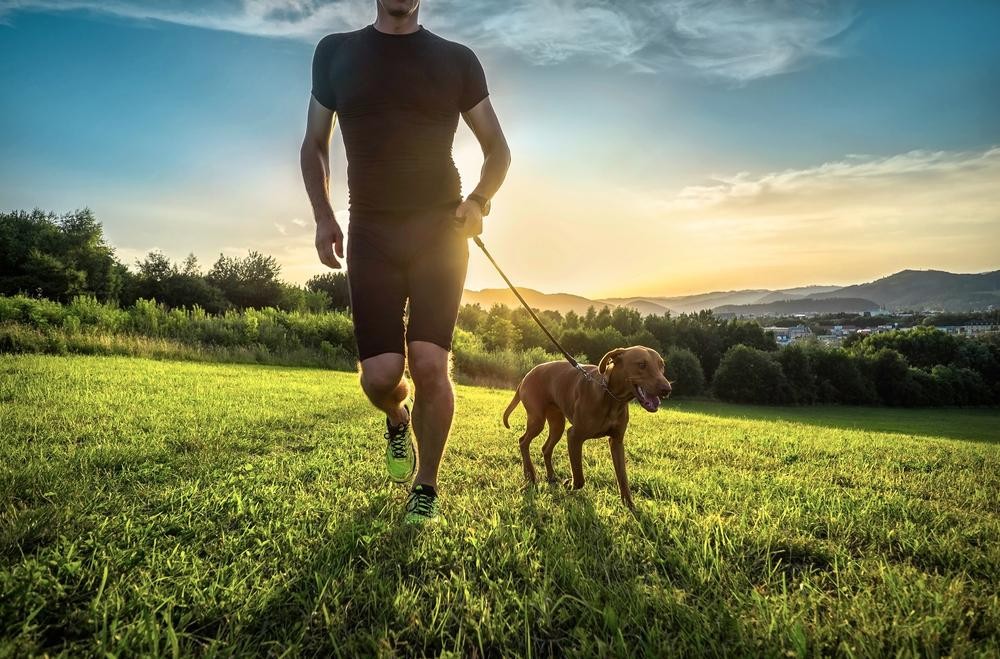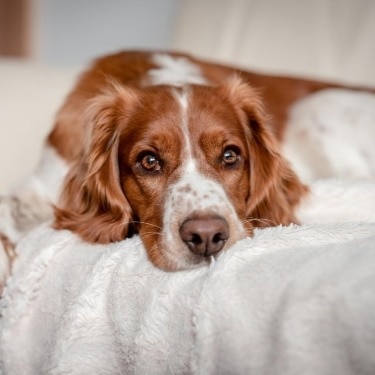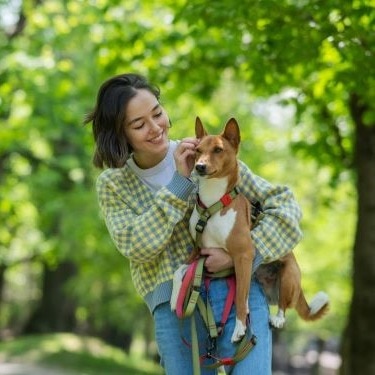

Dog lovers cherish spending time with their furry companions, whether it's through play, snuggles or shared adventures. In return, your dog may express their joy with happy tail wags, excited barks and contented sighs, making it hard to leave them home alone. It's no wonder so many pet parents feel guilty the moment they step out of the door.
Whether you're considering adopting a dog or adjusting to an in-office role after working remotely, it's only natural to worry about how to entertain your dog when you're away and how to bond with your dog once you return. Here's what you should know about keeping your pup engaged and content.
Can You Leave Your Dog Home Alone?
Thinking about adopting a dog but unsure if you have enough time? If your job keeps you away from home for most of the day, an important factor to consider is how long a dog can comfortably be left alone. Most healthy adult dogs can generally be left alone for up to six hours, but the exact duration depends on the individual pup and circumstances of your home. Here are some things to keep in mind.
- How old is your dog? Puppies have a limited amount of time they can "hold it" before needing a potty break. Senior dogs may also need more frequent outdoor time.
- Is your dog crate trained? Crate training is highly recommended to help reduce stress when you're away by offering a familiar, safe place to relax. Confining dogs to a crate when unsupervised also works well to keep the house clean and prevent damage from dogs who like to chew. While crate training requires a relatively small carrier, upgrade to a larger kennel for longer home-alone intervals with room for a water bowl and toys.
- Does your dog act out when alone? Dogs with separation anxiety may damage property or injure themselves when left alone. In these cases, seek intervention from a board-certified veterinary behaviorist to help manage this issue.

How to Entertain Your Dog While You're Away
The good news is that most dogs don't need or want endless entertainment. In fact, much of your dog's alone time will probably involve naps. Additionally, dogs who experience fear of separation may "act out" during the first 20 minutes or so of your absence, and then settle down.
If possible, gradually increase the amount of time you leave your dog alone, starting with short periods and working up from there. Provide them with plenty of exercise before you leave the house, and make sure they have access to fresh water and a safe, cozy place to relax.
When it comes to how to entertain your dog while you're away, the best approach is to offer environmental enrichment that engages all the senses. Here are some ideas.
Food Puzzles
Fill a puzzle toy, snuffle mat or lick mat (used for wet treats or food) with a special treat they only get when you leave the house. This helps create a positive association with your departure, helping reduce separation stress while keeping your dog mentally and physically engaged. Giving your dog the opportunity to use their teeth on an approved object may also make them less likely to target your property or injure themselves with destructive pastimes. Lick mats can work especially well for stress-prone pups, as licking is a natural way dogs self-soothe. Avoid puzzles that include small parts that could become choking hazards.
Interactive Toys
Keep your dog entertained with a variety of interactive toys. You can choose from durable chew toys, "hide and seek" toys your dog can take apart, and self-moving balls or bones that wiggle, roll or even "talk." For dogs who love to fetch, an automatic ball launcher can provide hours of entertainment — just be sure to adjust the distance and force appropriately for safe play. Avoid toys that can become choking hazards, such as stuffed toys with squeakers and toys with small loose parts.
Monitoring Systems
Electronic cameras allow you to monitor your dog's activities while you're at work. Many cameras come with two-way audio (allowing you to talk to your pup to provide reassurance or redirect them from unwanted behaviors) or include treat dispensers so you can reward good behaviors in real time. Others feature motion detection and alerts, notifying you if your dog is barking excessively or engaging in potentially destructive activities. Some even have built-in laser pointers or interactive games to help keep your pup entertained.
Pet Sitters, Dog Walkers and Day Care
If you need to be away longer than you're comfortable leaving your dog alone, consider hiring a pet sitter or dog walker. A midday visit can provide a potty break along with some playtime to help break up your dog's day. Doggy day care can be another great option if it's available in your area. Typically, you drop your dog off in the morning and pick them up after work, but some may offer transportation services. Doggy day cares may provide social playtime with other dogs, supervised swimming for water-loving pups and a variety of customizable activities to suit your dog's needs.

Making the Most of Your Time Together
When it comes to how to bond with your dog despite time away from the home, the key is making the most of your time together. No matter how much fun your pup had while you were away, your return home is likely still the highlight of their day. For many dogs, nothing beats a joyful reunion filled with play, pets and praise from their favorite person.
Since dogs thrive on routine and structure, consider creating a fun, predictable ritual for when you get home. Maybe it's singing a silly song they can howl along to, grabbing their leash for a walk or changing into "play" clothes so you can join them for some floor-level zoomies and bonding time.
It's natural for pet parents to feel guilty about leaving their dogs alone during the workday. Every dog and household is different, and balancing it all can be tough. The good news is you can keep your dog entertained with durable interactive toys, puzzle feeders and services like dog walkers and day care — and no matter what, your dog loves you unconditionally.






















